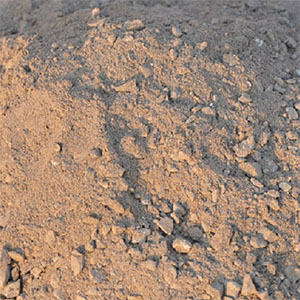Telephone:
+86 0417-3909999
Fax:
+86 0417-3909999
Contact:
Mr. Liu
website : en.ykblnc.com
company website:
www.ykblnc.com
E-mail:
bllzj888@163.com
address:
19-1 East, North Line, Yingda Road, Laobian District, Yingkou City, Liaoning Province
Magnesium-aluminum carbon brick PN series aluminum-magnesium carbon brick adopts extra-grade bauxite or corundum as aggregate, magnesia-carbon brick furnace for ladle is transferred to magnesia-carbon brick and focuses on strengthening matrix, and phenolic resin is used as binder, and it is formed by machine molding. Anti-erosion, anti-flaking, high strength, etc., suitable for the bottom of the ladle and the wall of the package. Electric furnace magnesia carbon brick
PN series magnesia-aluminum carbon bricks are based on aluminum-magnesium carbon bricks to adjust the process and technology, enhance the material's corrosion resistance and peeling resistance, suitable for the bottom of steel ladle and wall, can significantly improve the use of ladle life. The application of carbon in refractory materials has been widely used in the current metallurgical industry. In the past, in order to adapt to the new metallurgical process and refractory technology development, many new products have been developed. Refractory experts have long known that different forms of carbon exhibit excellent magnesium-aluminum carbon brick properties in refractories. In refractory oxides, carbon can reduce the wettability of slag, molten steel and refractory materials, increase its thermal conductivity, and reduce its expansion, thus giving refractory materials excellent thermal shock resistance. In addition, carbon has high thermal stability and its sublimation temperature is about 4000 °C. At a pressure of 110 to 140 bar, the triple point (solid/liquid/gas) of carbon in the phase diagram is close to 4020 ° C. Therefore, at pressures below 110 bar, the carbon sublimes without melting. Since carbon is oxidized at high temperatures, the above results can only be applied under specific conditions.

At present, the most important application areas for carbon-containing refractories are:
1. Converter, electric furnace and ladle work lining
2. Melting metal for 坩埚
3. Key components for continuous casting
4. Refractory materials for blast furnace ironmaking
5. By adding carbon, a variety of refractory bricks can be produced, especially magnesium carbonaceous high-grade alkaline refractories.
There are several ways to add carbon to a refractory:
1. Tar or synthetic resin impregnated magnesium aluminum carbon brick
The sintered oxide refractory has an open porosity of about 12%, and most of these pores can be filled with tar pitch or resin. Due to the volatilization of volatiles and relatively low density, the residual carbon ratio of such products is about 2% to 3%. The aluminum-magnesium carbon bricks, which are made of special grade clinker clinker, fused magnesia, phenolic resin and high-purity graphite, and various additives, have been applied to the 80-ton converter ladle of Xuanhua Steelmaking Plant. To meet the requirements of production. 1 Wet spray is to mix refractory aggregates, binders, additives and water to make a certain consistency of mud, and then spray the mud to the spray with compressed air magnesium aluminum carbon brick through the spray machine. A method on the surface. It is characterized by simple operation, high adhesion rate and rapid sintering. However, due to the large water content, the granules are fine, so the shrinkage is also large. At the same time, because the spray layer is thinner, the durability is not so good.
2 Semi-dry spray is a method in which a mixture of refractory aggregates, binders, additives, etc., is mixed with water through a water ring hole of the spray gun end, and is sprayed by compressed air onto the spray surface, water The dosage can be adjusted at any time according to the spray condition, and the fluctuation is generally between 10 and 20%, which is much lower than the water consumption of the wet spray. Therefore, the spray layer has a large bulk density and a small shrinkage, and a thicker spray layer can be obtained, and the durability is good, but the rebound amount is slightly higher than the wet method, and the spray method is relatively common.
3 Flame spray is to use compressed oxygen to transport the mixture of refractory aggregate, flux or heat generating agent to the nozzle, and burn it with high calorific value fuel to instantly heat the surface of the magnesia-resistant aluminum carbon brick fire aggregate particles to melt or half. In the molten state, the repairing method adhered to the lining is sprayed, and the spray-repairing layer obtained by the construction method has the advantages of compact structure, high strength, strong erosion resistance, strong anti-scouring ability, and firmness and durability. However, the flame spray device has high cost, complicated technology and high energy consumption for construction.